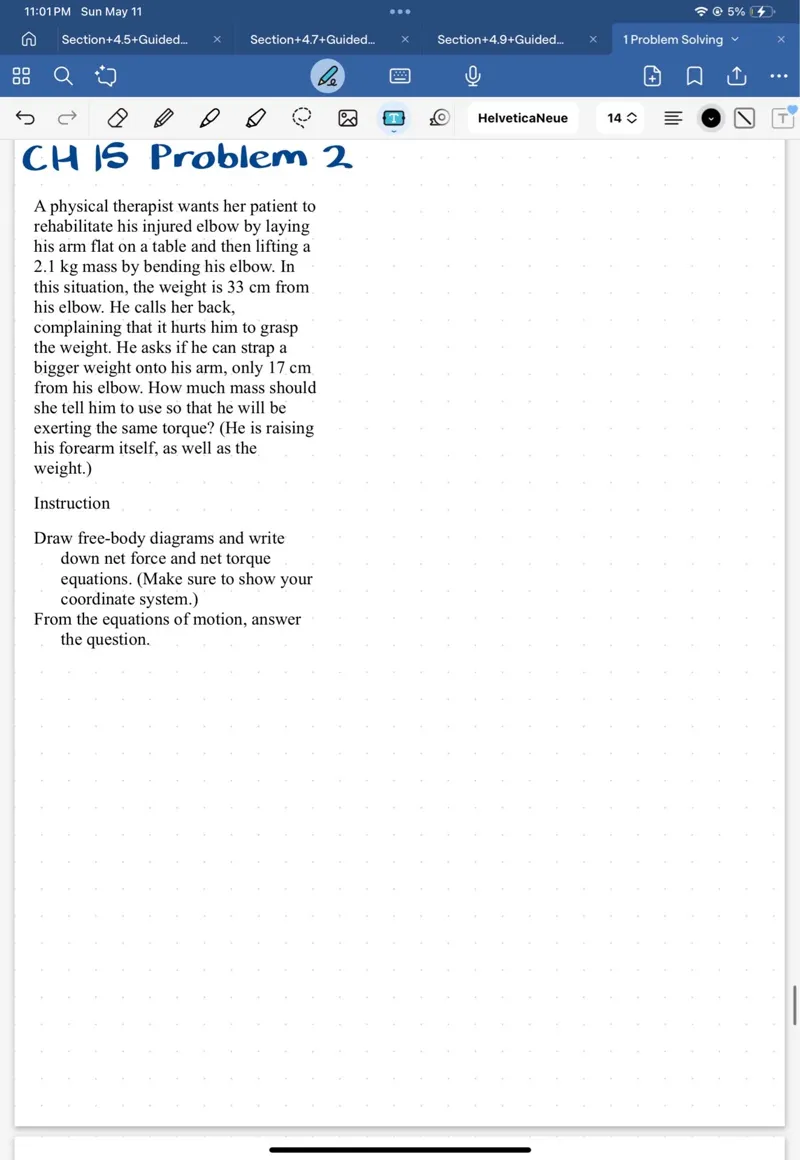Questions: CH IS Problem 2 A physical therapist wants her patient to rehabilitate his injured elbow by laying his arm flat on a table and then lifting a 2.1 kg mass by bending his elbow. In this situation, the weight is 33 cm from his elbow. He calls her back, complaining that it hurts him to grasp the weight. He asks if he can strap a bigger weight onto his arm, only 17 cm from his elbow. How much mass should she tell him to use so that he will be exerting the same torque? (He is raising his forearm itself, as well as the weight.) Instruction Draw free-body diagrams and write down net force and net torque equations. (Make sure to show your coordinate system.) From the equations of motion, answer the question.

Transcript text: CH IS Problem 2
A physical therapist wants her patient to rehabilitate his injured elbow by laying his arm flat on a table and then lifting a 2.1 kg mass by bending his elbow. In this situation, the weight is 33 cm from his elbow. He calls her back, complaining that it hurts him to grasp the weight. He asks if he can strap a bigger weight onto his arm, only 17 cm from his elbow. How much mass should she tell him to use so that he will be exerting the same torque? (He is raising his forearm itself, as well as the weight.)
Instruction
Draw free-body diagrams and write down net force and net torque equations. (Make sure to show your coordinate system.)
From the equations of motion, answer the question.





